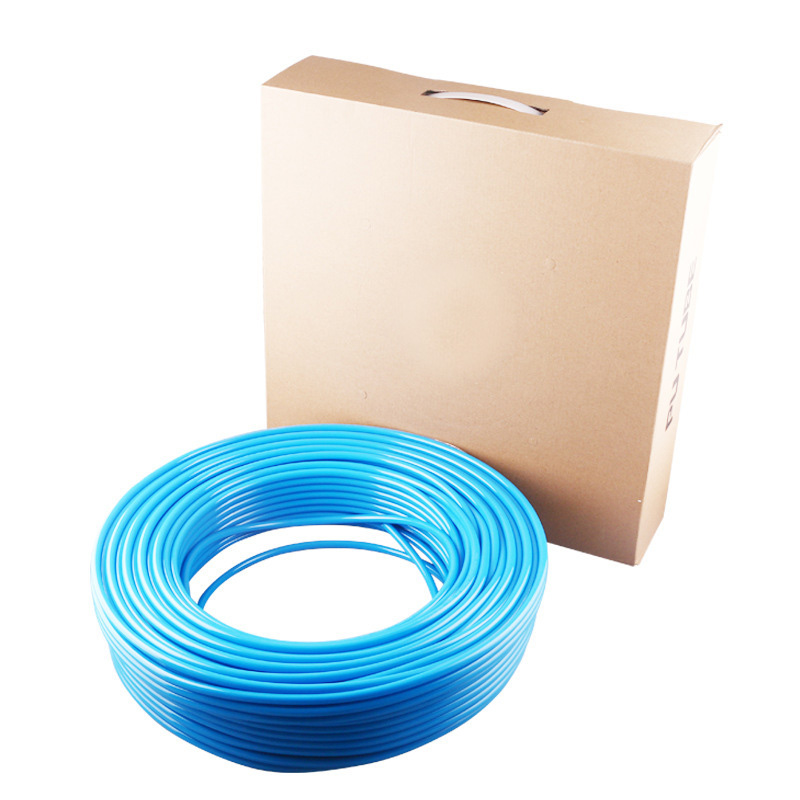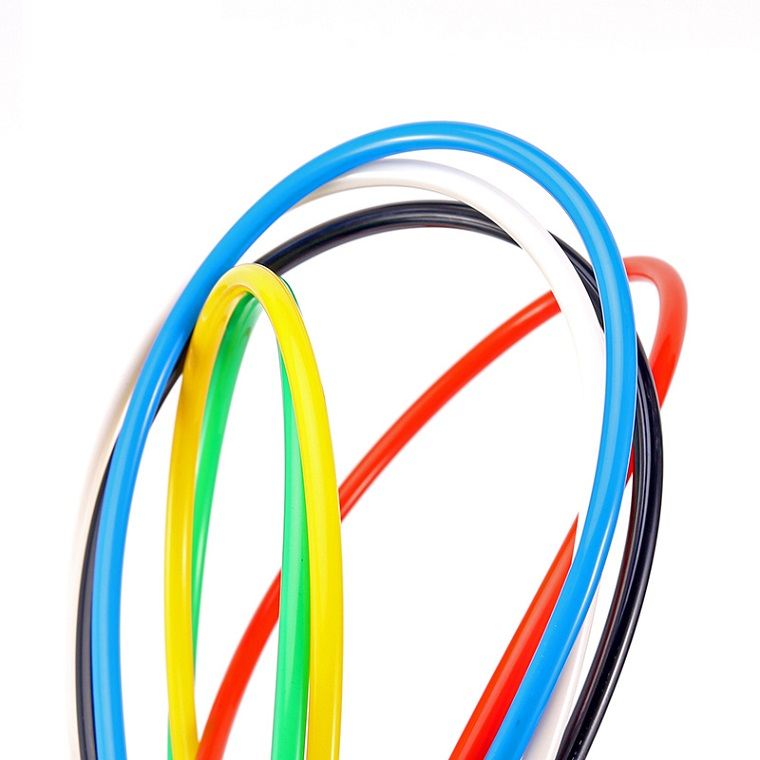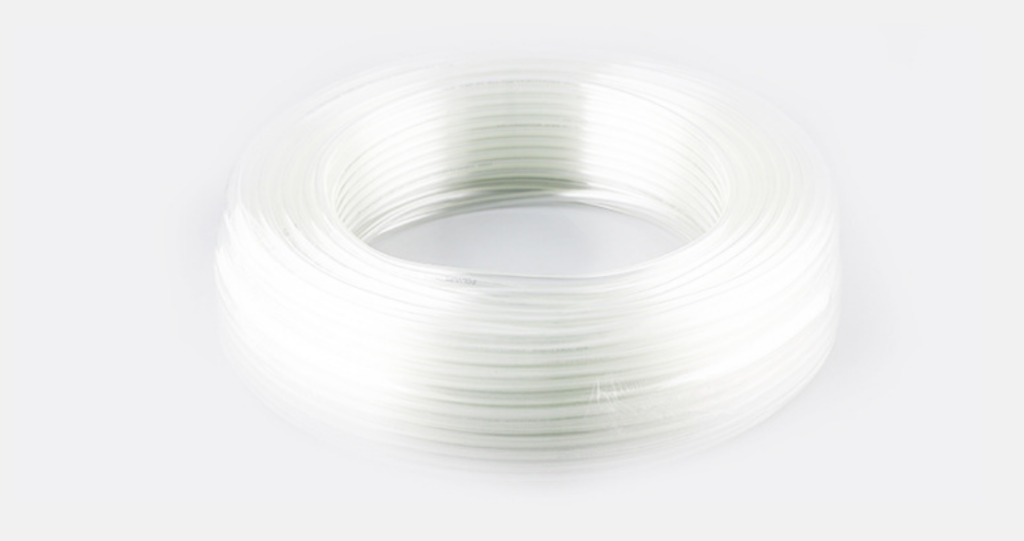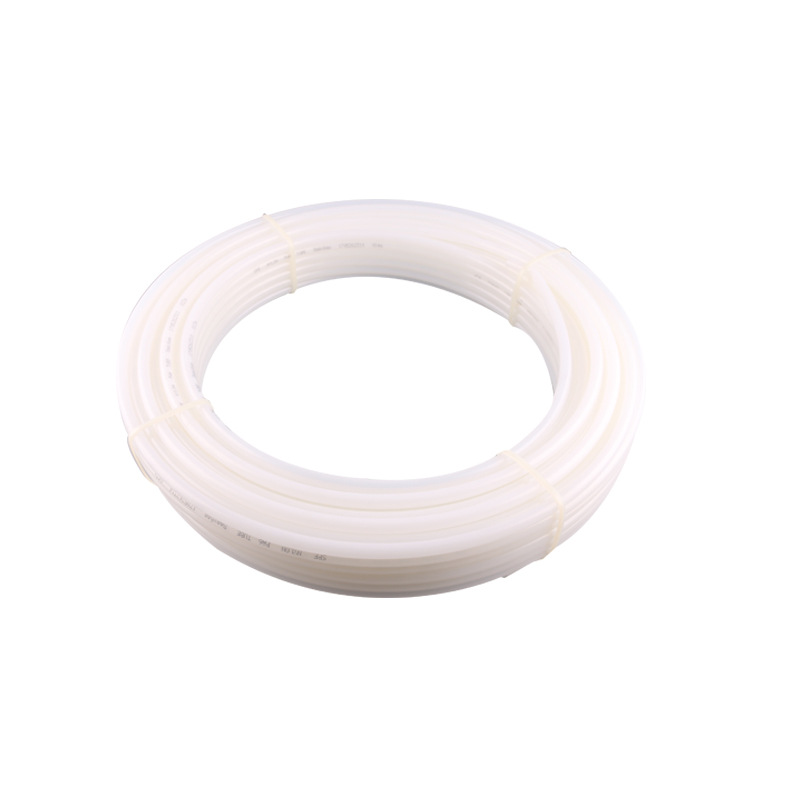Pneumatic tubing is a fundamental component in the realm of compressed air systems, playing a crucial role in the functionality and efficiency of various industrial applications. Understanding the materials that make up pneumatic tubing is essential for anyone involved in the design, maintenance, or operation of pneumatic systems. This knowledge not only aids in selecting the right tubing for specific applications but also ensures optimal performance, safety, and longevity of the systems. In this article, I will provide a comprehensive overview of the materials used in pneumatic tubing, their properties, applications, and the principles behind their functionality.
Table of Contents
ToggleCommon Materials Used in Pneumatic Tubing
Pneumatic tubing is primarily made from several key materials, each offering unique characteristics that cater to different operational needs. The most common materials include:
- Polyurethane (PU)
- Nylon
- Polyethylene (PE)
- Polytetrafluoroethylene (PTFE)
Polyurethane (PU) Tubing
Polyurethane tubing is widely recognized for its exceptional flexibility and durability. The molecular structure of PU allows it to bend and twist without losing its shape or integrity, making it ideal for dynamic applications where movement is frequent. This flexibility is particularly beneficial in environments where space is limited, and tubing must navigate around obstacles.
Key Properties:
- Abrasion Resistance: PU tubing is highly resistant to wear and tear, making it suitable for applications where it may come into contact with rough surfaces.
- Chemical Resistance: It can withstand exposure to various chemicals, oils, and solvents, which is crucial in industrial settings.
- Temperature Range: PU tubing typically operates effectively in a temperature range of -40°F to 175°F (-40°C to 80°C).
Applications: PU tubing is commonly used in robotics, automation, and pneumatic control systems, where its ability to handle high cycles and maintain performance under stress is invaluable.

Nylon Tubing
Nylon tubing is another popular choice in pneumatic systems, known for its strength and chemical resistance. The polymer structure of nylon provides excellent tensile strength, allowing it to handle higher pressures and temperatures compared to other materials.
Key Properties:
- High Strength: Nylon tubing can withstand significant pressure, making it suitable for demanding applications.
- Chemical Resistance: It is resistant to many chemicals, including oils and fuels, which is essential in automotive and manufacturing sectors.
- Temperature Tolerance: Nylon can operate effectively in temperatures ranging from -40°F to 200°F (-40°C to 93°C).
Applications: Nylon tubing is often used in automotive applications, hydraulic systems, and environments where high pressure and temperature are prevalent.

Polyethylene (PE) Tubing
Polyethylene tubing is known for its lightweight and cost-effective nature. The simplicity of its molecular structure makes it easy to manufacture and handle, which is why it is a popular choice for many applications.
Key Properties:
- Lightweight: PE tubing is easy to transport and install, making it ideal for various applications.
- Non-Toxic: It is safe for use in food and beverage applications due to its non-toxic properties.
- Flexibility: While not as flexible as PU, PE tubing still offers a good degree of bendability.
Applications: PE tubing is commonly used in low-pressure applications, such as in the food and beverage industry, where safety and compliance with health standards are critical.

Polytetrafluoroethylene (PTFE) Tubing
PTFE tubing is the material of choice when dealing with high temperatures and aggressive chemicals. Its unique molecular structure provides exceptional chemical inertness, meaning it will not react with the substances it carries.
Key Properties:
- Chemical Inertness: PTFE is resistant to almost all chemicals, making it ideal for pharmaceutical and chemical processing applications.
- High-Temperature Resistance: It can withstand temperatures up to 500°F (260°C) without degrading.
- Low Friction: PTFE has a low coefficient of friction, which helps in reducing wear on fittings and components.
Applications: PTFE tubing is often used in applications involving corrosive substances, high temperatures, and where purity is paramount, such as in the pharmaceutical and food processing industries.

Key Factors to Consider When Choosing Pneumatic Tubing
Selecting the right pneumatic tubing involves evaluating several critical factors to ensure optimal performance and safety:
- Pressure Ratings: Always check the maximum pressure rating of the tubing. Using tubing that cannot handle the required pressure can lead to catastrophic failures.
- Temperature Ranges: Consider the operating temperature of your application. Each material has a specific temperature range, and exceeding this can lead to degradation or failure.
- Fluid Compatibility: Ensure that the tubing material is compatible with the fluids it will carry. Chemical reactions can lead to leaks and system failures.
- Flexibility and Bend Radius: Depending on your application, you may need tubing that can bend easily without kinking. Consider the minimum bend radius specified by the manufacturer.
- Installation Environment: Assess the environment where the tubing will be installed. Factors such as exposure to UV light, extreme temperatures, or physical abrasion can influence material choice.
How Are Pneumatic Tubing Materials Manufactured?
The manufacturing processes for pneumatic tubing vary based on the material. For instance:
- Polyurethane and Nylon Tubing: These materials are typically produced through an extrusion process, where raw materials are melted and forced through a die to create the desired shape. This process allows for continuous production and can be tailored to specific dimensions and properties.
- PTFE Tubing: The manufacturing of PTFE tubing is more complex, often involving a process called sintering. This involves compressing PTFE powder into a mold and then heating it to create a solid, dense tube. Quality control is critical in this process to ensure that the tubing meets industry standards.
Quality control measures, such as pressure testing and material inspections, are essential to ensure that the tubing performs reliably in real-world applications. Manufacturers that prioritize these measures produce tubing that not only meets specifications but also exceeds expectations.
Common Issues and Troubleshooting Tips for Pneumatic Tubing
Even the best pneumatic tubing can encounter issues over time. Here are some common problems and troubleshooting tips based on my extensive experience in the industry:
- Leaks: Leaks can occur due to improper fittings or damaged tubing. Always ensure that fittings are properly secured and that the tubing is cut cleanly. If leaks persist, inspect the tubing for cracks or wear.
- Kinks: Kinks can restrict airflow and lead to system inefficiencies. Avoid sharp bends in the tubing. If kinks occur, consider using a tubing support or selecting a more flexible material.
- Material Degradation: Regularly inspect tubing for signs of wear, such as discoloration or brittleness. Replace any tubing that shows signs of degradation to prevent system failures.
- Pressure Drops: If you experience pressure drops in your system, check for blockages or restrictions in the tubing. Ensure that the tubing diameter is appropriate for the flow rate required.
By addressing these issues proactively, you can maintain the efficiency and safety of your pneumatic systems, ensuring they operate at peak performance.
Conclusion
Understanding what pneumatic tubing is made of is essential for anyone involved in the design or maintenance of pneumatic systems. By choosing the right material for your specific application, you can enhance the performance and longevity of your systems. Whether you opt for PU, nylon, PE, or PTFE tubing, each material has its unique advantages that can help you solve your specific challenges.
If you have any questions or need assistance in selecting the right pneumatic tubing for your needs, don’t hesitate to reach out. Your success in pneumatic applications is my priority, and I’m here to help you navigate the complexities of tubing selection and application.

